Ever wonder how birds gobble up the worm? 10 Frames per second with my trusty Nikon D500 shows us how!
Kingfishers are fascinating subjects to watch. They sit for hours, patiently waiting for prey and then BAM! in a few mill-seconds, a juicy worm or a fish is eaten up ...
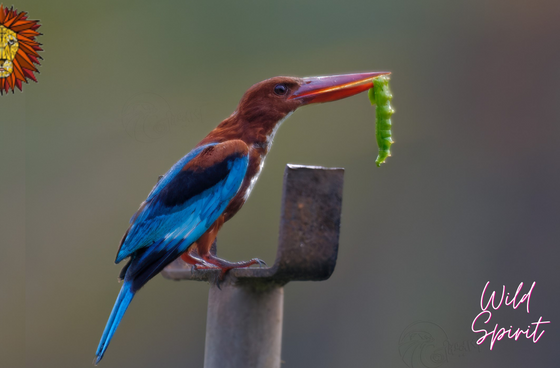
How they gobble up the snack makes a great subject to try out high speed photography.
I tried to capture the stages in which the worm is gobbled up with following camera settings on a cloudy rainy day -
- 10 Frames per second (this is the maximum I can get on my camera)
- ISO 640
- Exposure comp +3.0 due to the cloudy day and dark subject against light background of a meadow
- Shutter speed 1/1000s
I could capture tons of frames that showed the entire sequence in which the Kingfisher had it's breakfast! 😀
I present below, a few frames that illustrate the sequence.
Step 1 - Find a suitable tall perch, Sit patiently and look for prey
<center
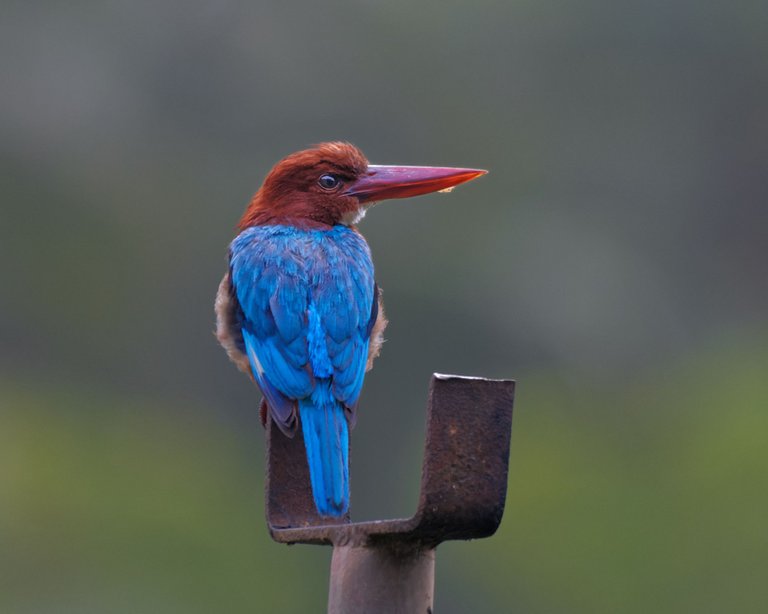
Seemingly, they just sit there doing nothing - for long periods. They are, however, keenly observing the air, land and water around for prey. Insects, worms, caterpillars, fish, crabs - anything actually!
Step 2: Catch the worm and return to perch
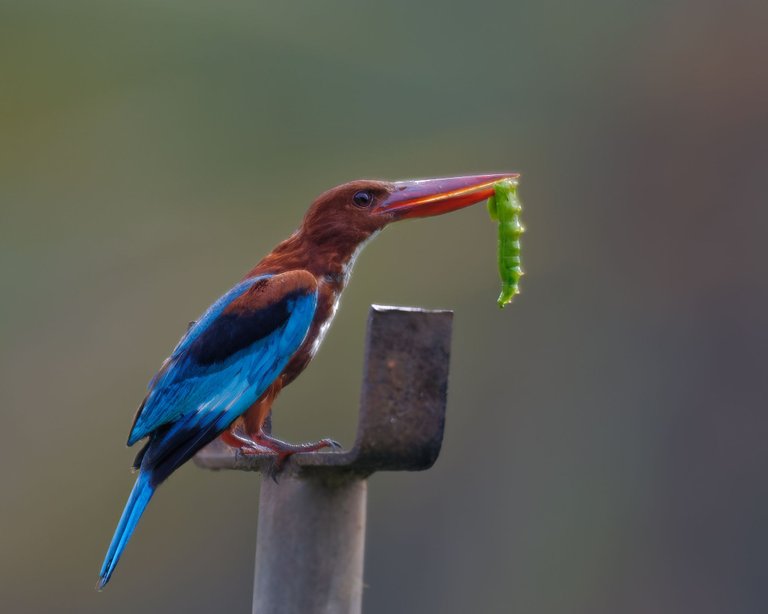
Ahhh - caught it! Back on my home perch to enjoy breakfast!
Step 3: Change hold - without dropping the worm
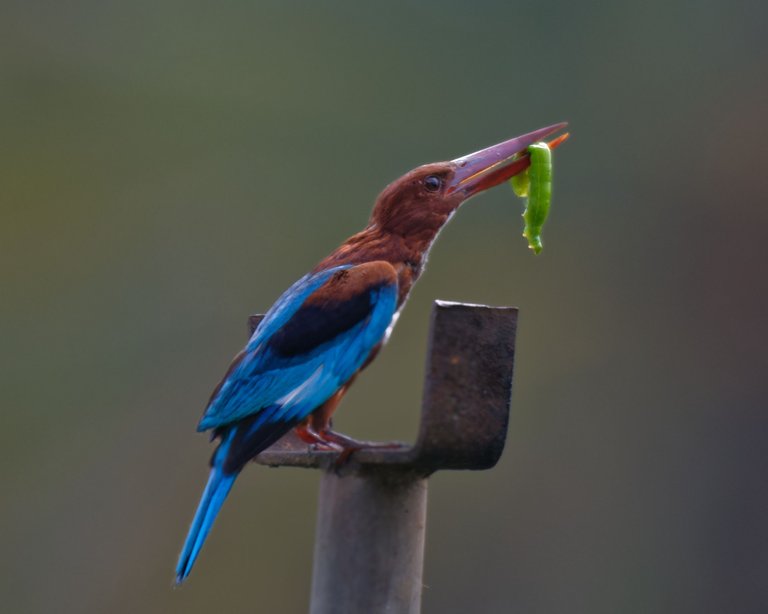
This is a prep for getting the worm dead and ready to be gobbled up. The kingfisher has to be careful to change grip on the wriggling worm to such a position that it can bash it against the perch without hitting own beak or head on the perch.
Step 4: Twist head violently from side to side and bash up worm against perch
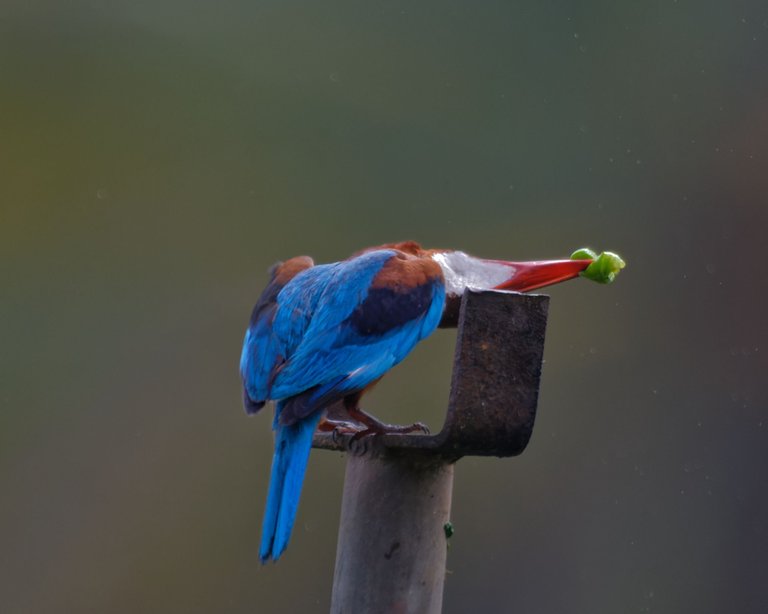
This is the 'Kill stroke". Breakfast is ready to be gobbled up now!
Step 5: Toss the worm vertically in mouth and gobble up
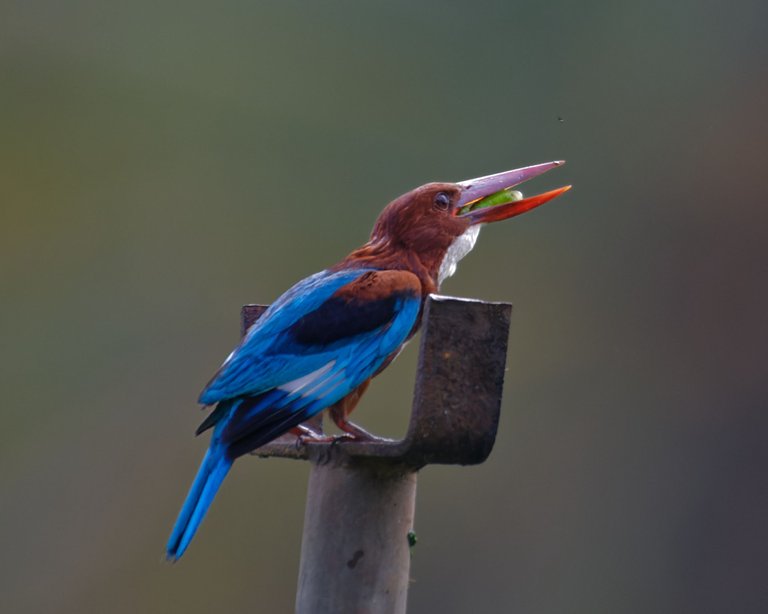
It is important to align the worm lengthwise with the beak so that it goes in whole!
Step 6: All Done! Smile now!😀
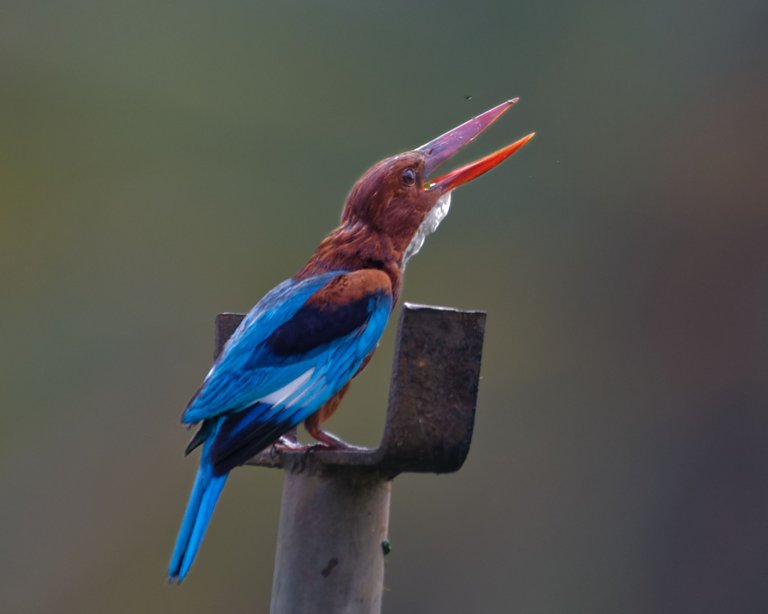
Seems to be happy after eating the worm and sits with a goofy smile on face!
Getting the shutter speed and exposure right is key to high speed photography in the wild. Especially when it is cloudy with very low light.
I think I managed to get it right. What do you think? Please feel free to comment with your opinions and suggestions.
I hope you enjoyed the pictures ...
Please comment freely and let me know your opinion. I will try to bring many different types of wildlife photos/macro/Astro posts to the community. Feedback and comments are welcome,. I am still learning many techniques and always value feedback from experts in this community.
Have a nice day everyone. Cheers!



Absolutely stunning photos you captured thank you so much for sharing 👍🏾
@kgakakillerg Thanks for the encouraging words and appreciation
You are welcome 🤝🏾 @tipu curate
Upvoted 👌 (Mana: 5/45) Liquid rewards.
Wonderful shots! I'm no professional but I think they are good! Kingfishers really have such a wonderful variety in their feather colours. I would love to photograph more birds but I am afraid my lens just doesn't have enough zoom power 😥
@pixelhuntersam Thank you so much. Kingfishers are really interesting. I have pictures of 3 types of Kingfishers so far. Very colorful.
What lens are you using right now? I am afraid you need at least a 400mm or 500 mm lens.
55mm, unfortunately, so nowhere near enough to get decent bird photos 😭
Maybe if I pretend I am a statue I'll get lucky one day 🤣
@pixelhuntersam You can try photographing birds near a water fountain in the backyard or with a bird feeder. You need to be hidden in a hide near the location. Then even 55mm may work Obviously it is impossible to get very close up shots but still you will get some good action shots. Do try
Excellent shots!
@castleberry Thank you so much. It is always a pat on my back to get appreciated from stalwarts of the community like you.
That's quite the compliment! =)
This is so amazing how the bird killed the worm before eating it.
You know that I am fan of yours, do you? Great pics as always.
When it is cloudy or shady, my ISO is going up and I end up with the bloody noise. I should use exposure compensation instead. Would it work if the background is dark? Or if the background is grey sky?
@nelinoeva It is an honor to hear that you are a fan of mine 😀 Thanks
ISO does go up when it is cloudy. We can't help that. Exposure comp works to some extent when the background is light but if the overall light is too low, we have to go to higher ISOs. One of the solutions is to use the noise reduction in software postprocessing such as Lightroom or Photoshop but that comes with a penalty of reduced details. It is ok to have less details sometimes with action shots such as the ones in the post. It is always a trade off
Thank you very much for your advice. 🙂
I have a light version of Lightroom on my tablet and sometimes I used it to reduce the noise. But someone once said, better to have a photo with noise rather than no photo.
@nelinoeva Yes better to have photo with noise than no photo. Lol. Very true. However, do use the Lightroom. You may compromise a bit on details but not really too noticeable if you are only publishing on the web. For print, we require hi-res images and details, if soft, are immediately noticeable but on the web, we can get by and have pleasing images in spite of some lost details.
I don't print my photos, so I can do such compromise.
Thank you very much for the advice.🙂